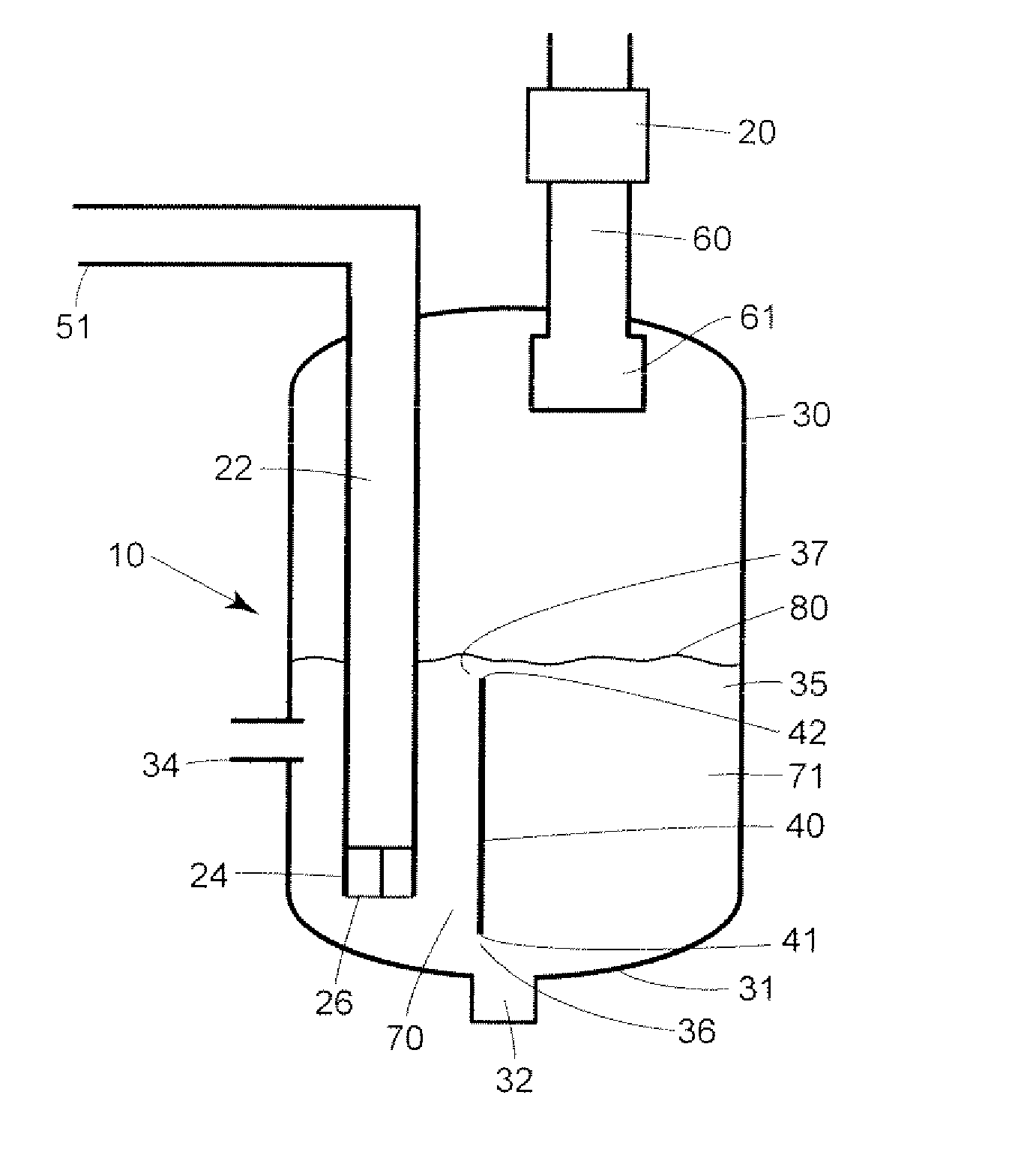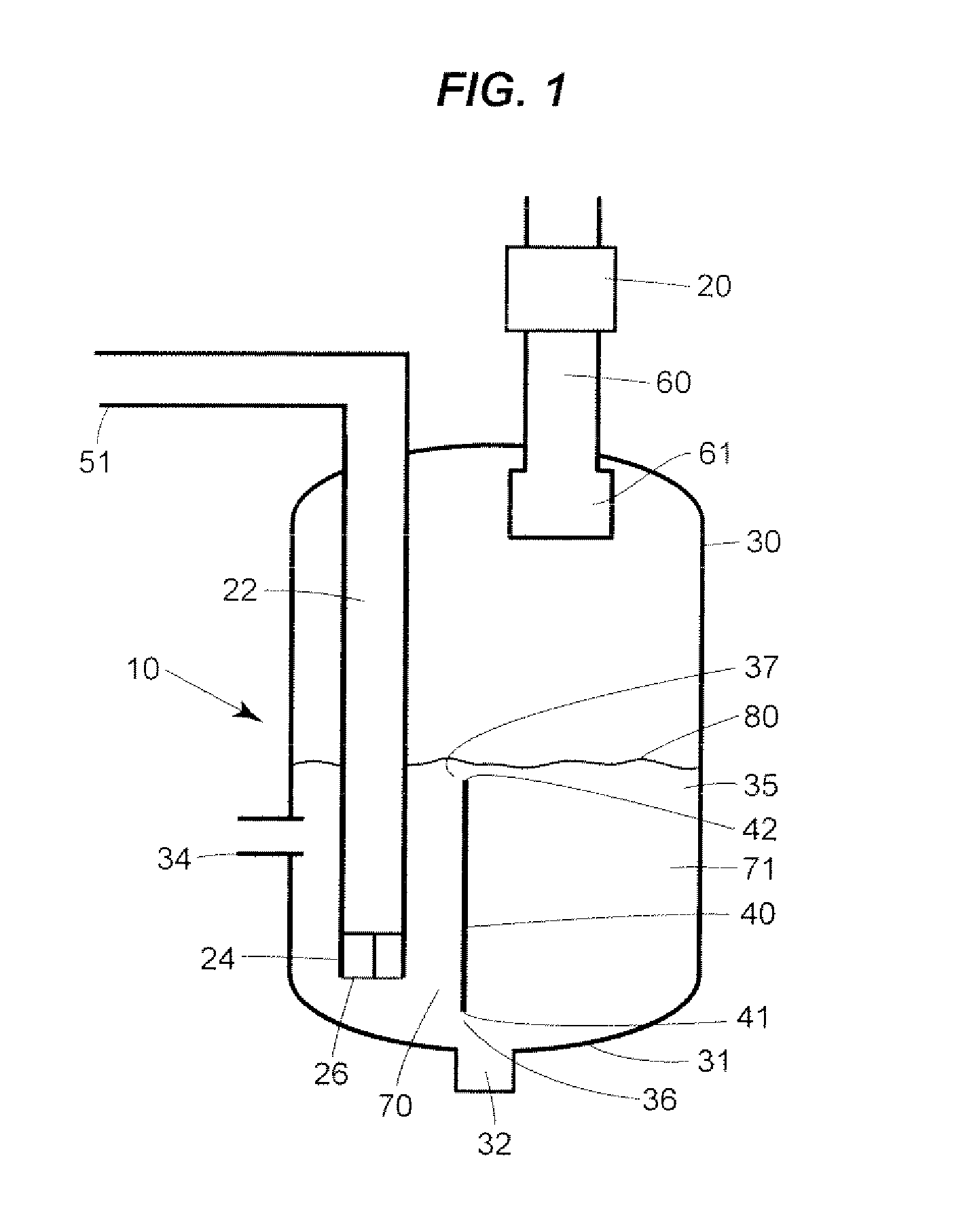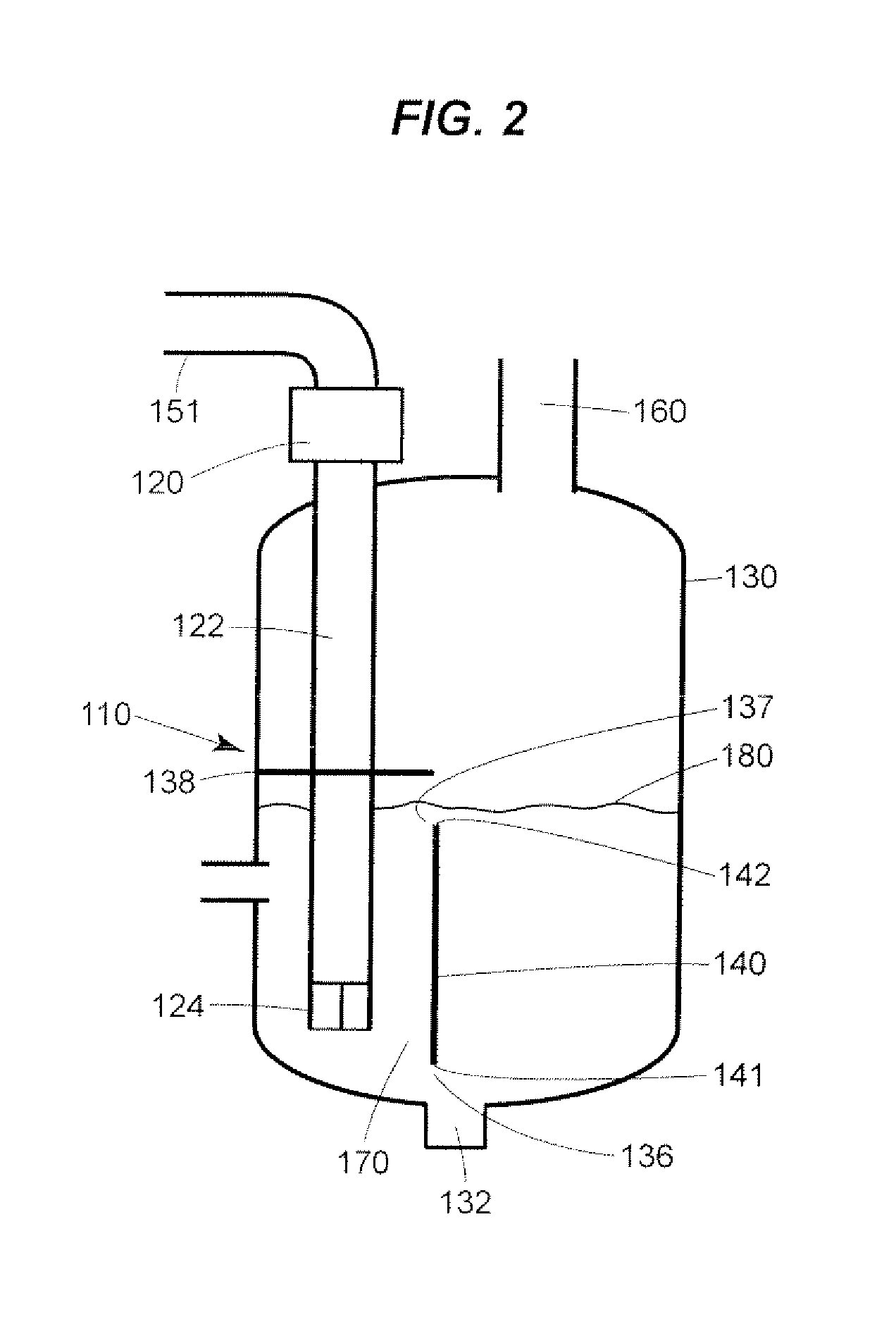Fluid scrubber
a scrubber and flue gas technology, applied in the field of scrubbers, can solve the problems of high mixing degree between the gas and the scrubber liquid, and any suspended particles within the scrubber liquid, and achieve the effects of high mixing degree, efficient transfer, and high degree of turbulen
- Summary
- Abstract
- Description
- Claims
- Application Information
AI Technical Summary
Benefits of technology
Problems solved by technology
Method used
Image
Examples
Embodiment Construction
[0032]The performance of fluid scrubbers according to the disclosure depends on the properties of the pollutant(s) to be removed from the gas feed stream, the properties of the scrubbing liquid and the temperature and humidity of the gas feed stream. Usually, the gas feed stream is contaminated industrial exhaust. One skilled in the art will readily recognize that the advantages of fluid scrubbers according to the disclosure may be realized by substituting such fluid scrubbers for conventional fluid scrubbers in almost any fluid scrubbing application. Wherever fluid scrubbers according to the disclosure are employed, conventional means may be employed to control the flow of contaminated gas and scrubbing liquid through the fluid scrubber and, if required, to post-treat the liquid and / or gas streams. Likewise, most other conventional means of controlling fluid scrubbing systems to meet the requirements of a particular application may be employed. It will also be readily recognized th...
PUM
| Property | Measurement | Unit |
|---|---|---|
| distance | aaaaa | aaaaa |
| diameter | aaaaa | aaaaa |
| diameter | aaaaa | aaaaa |
Abstract
Description
Claims
Application Information
 Login to View More
Login to View More - R&D
- Intellectual Property
- Life Sciences
- Materials
- Tech Scout
- Unparalleled Data Quality
- Higher Quality Content
- 60% Fewer Hallucinations
Browse by: Latest US Patents, China's latest patents, Technical Efficacy Thesaurus, Application Domain, Technology Topic, Popular Technical Reports.
© 2025 PatSnap. All rights reserved.Legal|Privacy policy|Modern Slavery Act Transparency Statement|Sitemap|About US| Contact US: help@patsnap.com



